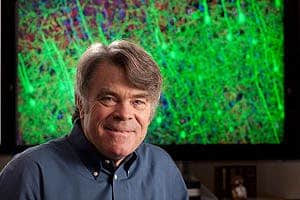The typical healthy human brain contains about 200 billion nerve cells, called neurons, all of which are connected through hundreds of trillions of small connections called synapses. One single neuron can lead to up to 10.000 synapses with other neurons, according to Stephen Smith, PhD, professor of molecular and cellular physiology.

A synapse is less than a thousandth of a millimeter in diameter, and the spaces between them are not much bigger either. This method, array tomography, is at its starting years, but as time passes, it will probably become more and more reliable, and more and more efficient.
“I anticipate that within a few years, array tomography will have become an important mainline clinical pathology technique, and a drug-research tool,” Smith said. He and Micheva are founding a company that is now gathering investor funding for further work along these lines. Stanford’s Office of Technology Licensing has obtained one U.S. patent on array tomography and filed for a second.
Full study here.






